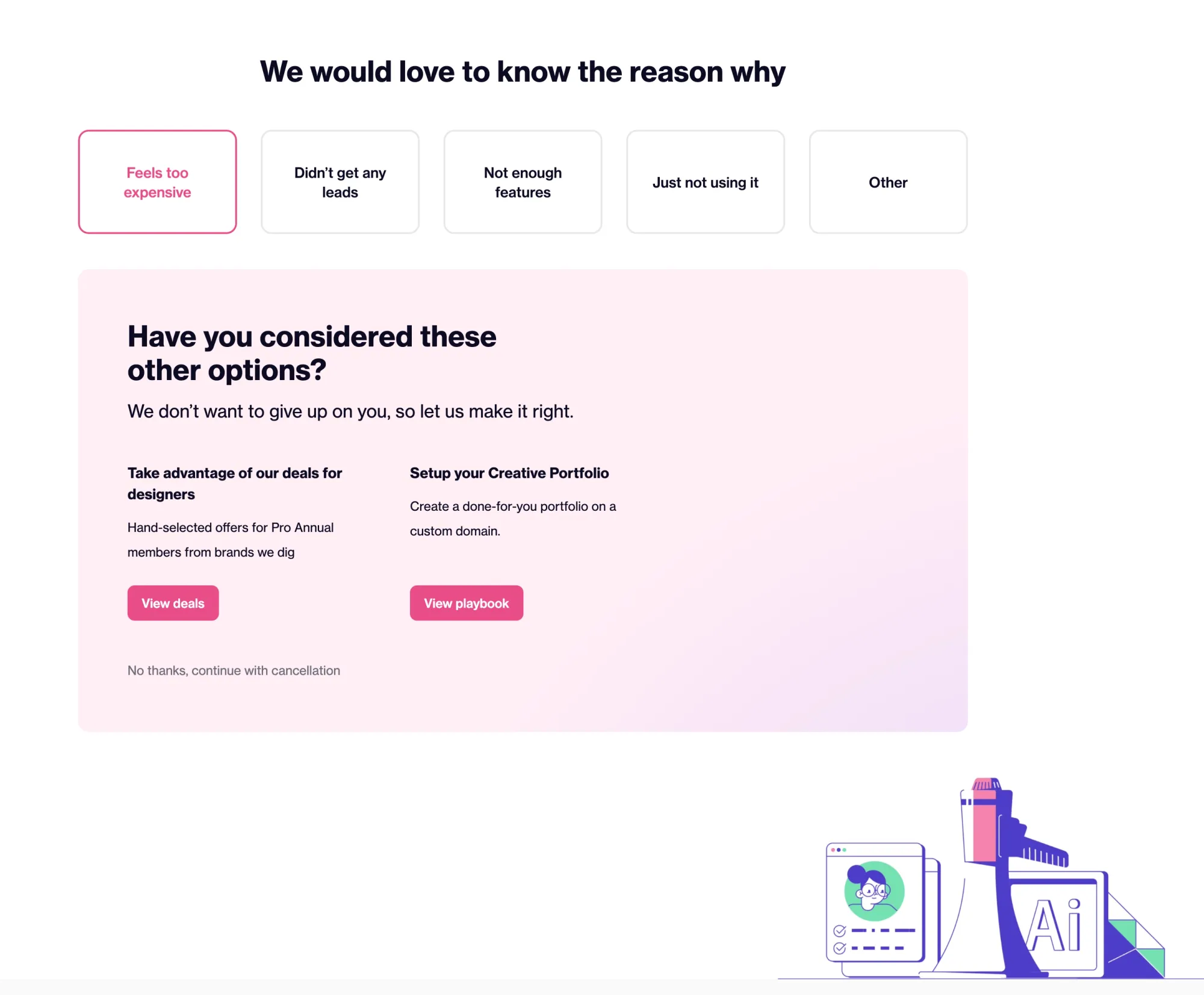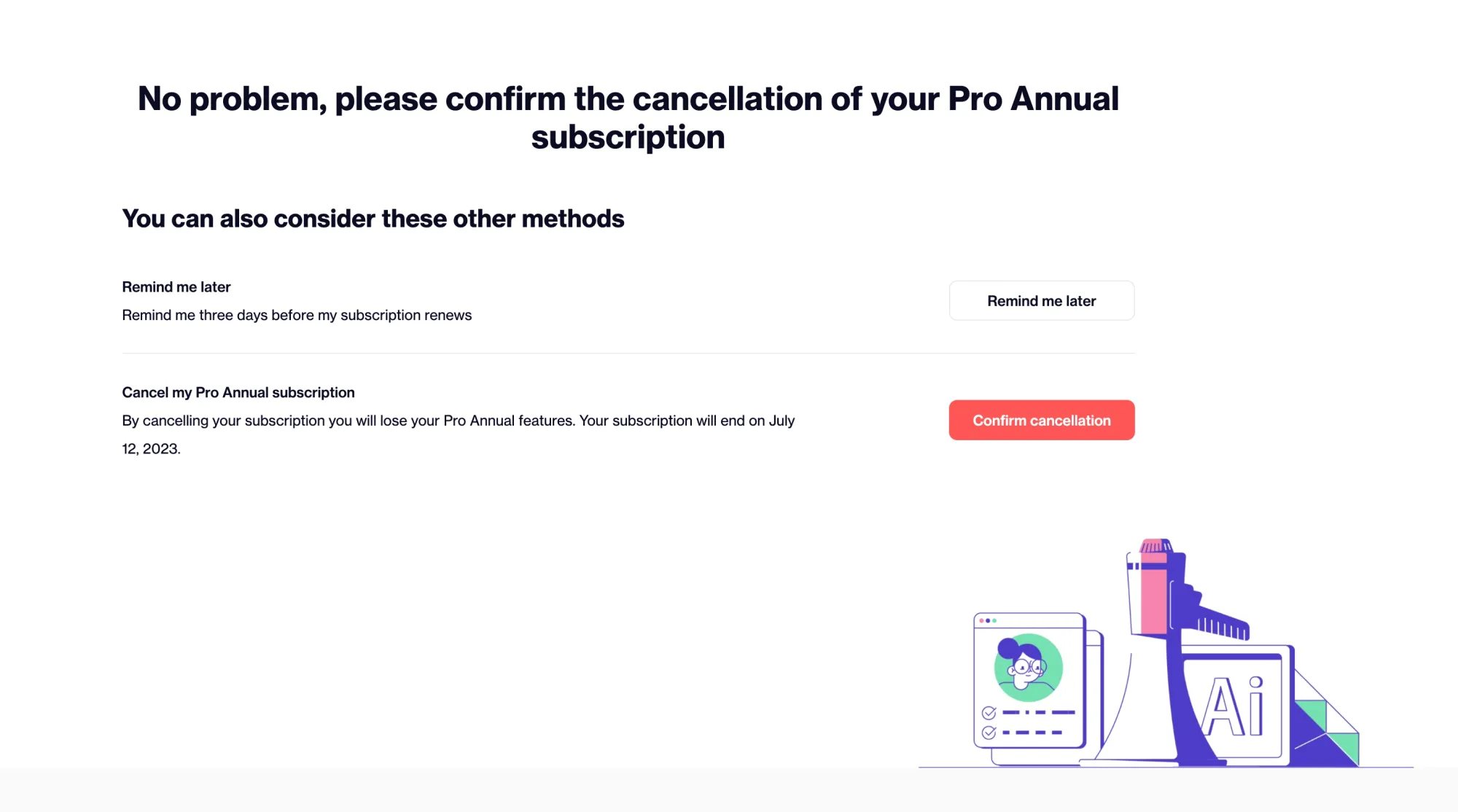The vast world of online user experience is filled with numerous tactics used by companies to guide user behavior. However, not all of these tactics prioritize the user's best interests. Dark patterns, which are deceptive design choices that trick users into taking actions they might not have intended to, are becoming increasingly prevalent. One such tactic, aptly named the Roach Motel, is common in subscription-based services, and the Dribbble cancellation process serves as a good example.
Checking-In to the Roach Motel
The Roach Motel dark pattern can be summarized as a process where it's easy to get into a situation but challenging to get out of it. In the world of online subscriptions, this often translates to an effortless sign-up process contrasted with a convoluted and time-consuming cancellation task.
Dribbble's cancellation maze
Dribbble's cancellation process, as seen in the provided images, showcases classic signs of the Roach Motel pattern:

Step-by-Step barrier: The cancellation process is divided into multiple steps, each designed to make the user second-guess their decision. By stretching the process, users might give up halfway or become frustrated and decide it's easier just to continue with the service.

Highlighting loss: As users proceed with the cancellation, they are repeatedly reminded of the benefits they'll lose. By emphasizing the value that the Pro Annual subscription brings, Dribbble aims to induce a sense of FOMO (Fear Of Missing Out), hoping that users might reconsider their decision.

Alternative options before exit: Before allowing users to finalize their cancellation, Dribbble provides alternatives like reminders for later dates or other methods to keep the subscription. These alternatives, while seeming considerate, are just additional obstacles placed to deter users from their initial intent.
Why this matters
Such tactics might be profitable for businesses in the short term, but they risk damaging their reputation and trust with their user base in the long run. Users feel trapped, deceived, and undervalued when faced with such dark patterns, leading to negative perceptions and potential loss of loyal customers.
Shedding light on dark patterns
Awareness is the first step towards change. By understanding and identifying these patterns, users can navigate the digital world with increased vigilance. Additionally, discussions and criticisms surrounding such tactics can push companies to adopt more ethical and transparent practices.
While businesses have valid reasons to retain customers, it's essential to keep a balance between achieving company goals and respecting users. The digital space is a shared one, and the responsibility is on both companies and users to make it transparent, ethical, and user-centric.


